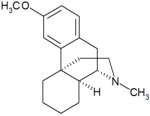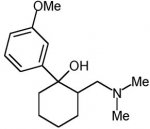I thought of putting this into the future dissociatives thread but I think it deserves its own thread.
MDPH which appears to be deschloroketamine has been used to treat bacterial and fungal infections,
as described in United States Patent 5811464:
http://v3.espacenet.com/textdoc?DB=EPODOC&IDX=US5811464&F=0
so I wonder if ketamine has similar immunomodulatory effects, it doesn't appear that the dose is high enough (2mg per day) to do anything directly against the infectous agents. perhaps this is placebo who knows but interesting all the same. or perhaps it is to do with antidepressant activity?
next time you order K then perhaps you should talk about your genital herpes
MDPH which appears to be deschloroketamine has been used to treat bacterial and fungal infections,
as described in United States Patent 5811464:
http://v3.espacenet.com/textdoc?DB=EPODOC&IDX=US5811464&F=0
This invention relates to the use of 2-methylamino-2-phenylcyclohexanone and of pharmaceuticals which contain this active agent in combination with physiologically acceptable solid or liquid supporting materials or diluents for treating bacterial, fungal, virus or protozoan infections as well as for immunomodulation.
Treatment of herpetic infections
Various groups of patients suffering from lip herpes, genital herpes, herpes zoster and herpes simplex were treated by administering MPCH. The dose was 2 mg of MPCH per day for about 4-5 days. At the end of the therapy, the diseases cured more speedily to a statistically significant extent (cf. FIG. 3).
so I wonder if ketamine has similar immunomodulatory effects, it doesn't appear that the dose is high enough (2mg per day) to do anything directly against the infectous agents. perhaps this is placebo who knows but interesting all the same. or perhaps it is to do with antidepressant activity?
next time you order K then perhaps you should talk about your genital herpes



